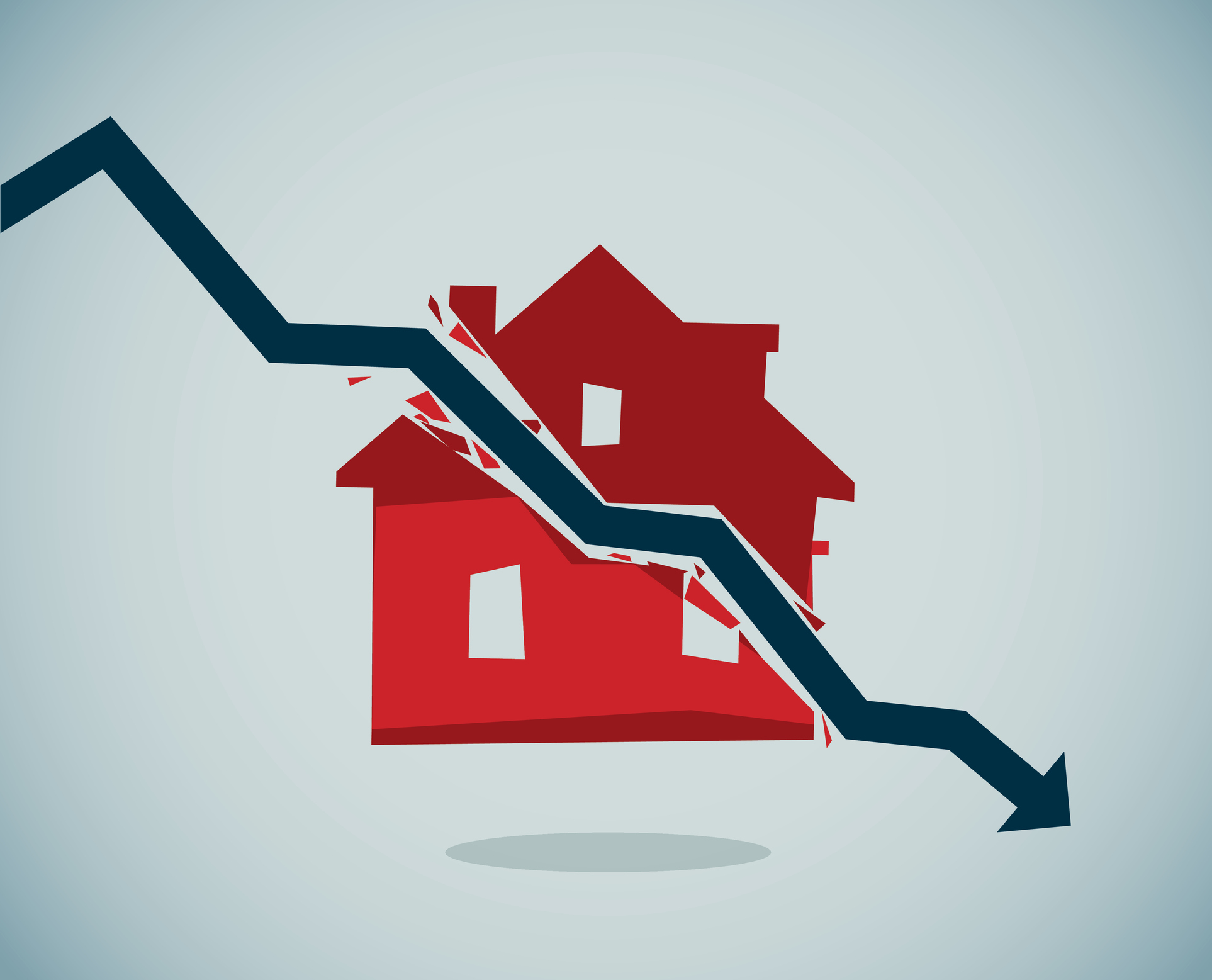Energy-Efficiency Credits — Get’ Em While You Can
Green energy-efficiency credits are on the chopping block. If you want some of these valuable tax credits, you'll need to upgrade your home sooner rather than later.


If you are mulling installing solar panels on your roof or making other energy-efficient improvements to your home, you may want to act quickly to take advantage of one of two federal income tax credits. First, is the residential clean energy property credit for homeowners who install a power system that uses solar or other renewable energy. Second, is the energy-efficient home improvement credit for homeowners who make smaller energy-saving purchases for their homes.
How long these two credits — which reduce the taxes you owe dollar for dollar — will remain on the books, and what, if any, changes will be made, are currently open questions. On May 22, the House passed its One Big Beautiful Bill that would extend the tax changes in the 2017 Tax Cuts and Jobs Act that automatically expire at the end of 2025. The bill also provides lots of other tax breaks.
The House's One Big Beautiful Bill would also scale back many of the green energy tax credits that were created, expanded or renewed in the 2022 Inflation Reduction Act., including the home energy savings tax credits. Specifically, the bill would repeal the residential clean energy property credit and the energy efficient home improvement credit, effective for property placed in service after 2025.

Sign up for Kiplinger’s Free E-Newsletters
Profit and prosper with the best of expert advice on investing, taxes, retirement, personal finance and more - straight to your e-mail.
Profit and prosper with the best of expert advice - straight to your e-mail.
Now it's the Senate's turn. The odds are good that Congress will pass a tax package sometime this summer, despite a series of hurdles that lawmakers will have to overcome. However, the Senate will make some changes to the bill, including possible revisions to the green energy tax credits.
Since homeowners may claim a home energy credit only for the year the improvements are made, if you’re thinking of making any energy-saving upgrades, you’ll want to pay for them and get them completed before December 31 to ensure a tax credit. They should be claimed using IRS Form 5695.
The residential clean energy property credit
This tax break is for homeowners who install an alternative energy system that relies on a renewable energy source, such as solar, wind, geothermal, or fuel cell or battery storage technology. Think solar panels, solar-powered water heaters, geothermal heat pumps, wind turbines, fuel cells, etc. The credit equals 30% of the cost of materials and installation or systems that you install in your home. There is no maximum credit dollar limit for solar, geothermal, wind, or battery storage systems. But for fuel cells, the credit is capped at $500 for each half-kilowatt of power capacity.
Unused residential clean energy property credits can be carried forward to reduce tax owed in future years. Homeowners who install a renewable energy system sometimes qualify for a rebate. These rebates are nontaxable, but they reduce the system’s cost for figuring the credit.
The energy efficient home improvement credit
The basic credit is 30% of the cost and installation of certain types of insulation, boilers, central air-conditioning systems, water heaters, heat pumps, exterior doors and windows, etc., that you install in a home. These items must also meet certain energy-efficiency requirements, depending on the product. There is a $1,200 general aggregate yearly credit limit. But many specific upgrades have lower monetary credit limits and others have higher ones.
Here are the item-by-item yearly caps: $150 for a home-energy audit; $500 in aggregate for exterior doors (a maximum of $250 per door); $600 for exterior windows or skylights, and $600 for natural gas, propane or oil water heaters, electric panels, central air conditioners, or natural gas, propane or oil furnaces or hot water boilers. And $2,000 for biomass stoves or biomass boilers, electric or natural gas heat pump water heaters, or electric or natural gas heat pumps. Unlike the residential clean energy property credit, you cannot carry forward any unused energy-efficient home improvement credits to future years.
As an example, let’s say that in 2025, you purchase and install in your home two exterior doors at a cost of $1,000 each, windows and skylights at a total cost of $2,200, and a $6,000 central air conditioner. Your 2025 tax credit amount is $1,200. Now, change the facts. In 2025, you purchase and install in your home a natural gas heat pump that costs $7,000, a $4,000 natural gas tankless water heater, and a $6,000 central air conditioner. Your total maximum credit is $3,200: $2,000 for the heat pump. $600 for the water heater and $600 for the air conditioner.
For more on these credits and the documentation they require, read Tax Credits for Energy-Efficiency Home Improvement in 2025.
Note: This item first appeared in Kiplinger Retirement Report, our popular monthly periodical that covers key concerns of affluent older Americans who are retired or preparing for retirement. Subscribe for retirement advice that’s right on the money.
Related content
Profit and prosper with the best of Kiplinger's advice on investing, taxes, retirement, personal finance and much more. Delivered daily. Enter your email in the box and click Sign Me Up.

Joy is an experienced CPA and tax attorney with an L.L.M. in Taxation from New York University School of Law. After many years working for big law and accounting firms, Joy saw the light and now puts her education, legal experience and in-depth knowledge of federal tax law to use writing for Kiplinger. She writes and edits The Kiplinger Tax Letter and contributes federal tax and retirement stories to kiplinger.com and Kiplinger’s Retirement Report. Her articles have been picked up by the Washington Post and other media outlets. Joy has also appeared as a tax expert in newspapers, on television and on radio discussing federal tax developments.
-
 New Trump Incentive Could Help Donors Avoid Capital Gains Tax
New Trump Incentive Could Help Donors Avoid Capital Gains TaxTax Policy As U.S. Senate Republicans mark up their version of the One Big Beautiful Bill Act, one provision could give some donors a major tax break.
-
 2025 SALT Cap Could Hurt Top 'Hidden Home Cost'
2025 SALT Cap Could Hurt Top 'Hidden Home Cost'Tax Deductions The latest GOP tax bill might make hidden homeowner costs worse for you. Here’s how.
-
 Technology Unleashes the Power of Year-Round Tax-Loss Harvesting
Technology Unleashes the Power of Year-Round Tax-Loss HarvestingTech advancements have made it possible to continuously monitor and rebalance portfolios, allowing for harvesting losses throughout the year rather than just once a year.
-
 Real Estate Bridge Funds: An Expert Guide to Investing in a Volatile Market
Real Estate Bridge Funds: An Expert Guide to Investing in a Volatile MarketInvestors looking for passive income are buying into these funds, which offer capital to borrowers for short-term financing.
-
 I'm 52 With $2.1 Million in Retirement Savings: Can I Afford a Second Home?
I'm 52 With $2.1 Million in Retirement Savings: Can I Afford a Second Home?Buy a second home now, or wait until retirement? It depends.
-
 What to Know About Mortgage Escrow Accounts
What to Know About Mortgage Escrow AccountsEscrow accounts ensure that you pay your bills for home insurance and property taxes.
-
 Summer Is Made for Sun, Fun … and Estate Planning Conversations
Summer Is Made for Sun, Fun … and Estate Planning ConversationsNow is the time to discuss estate planning with your loved ones to ensure the Great Wealth Transfer is efficient, tax-aware and in line with your legacy goals — not Uncle Sam's.
-
 Retire in Ecuador for an Affordable, Rich Life
Retire in Ecuador for an Affordable, Rich LifeEcuador offers one of the world’s most painless visa processes in a country rich with biodiversity.
-
 Don't Have an Estate Plan? Six Things That Could Go Very Wrong
Don't Have an Estate Plan? Six Things That Could Go Very WrongBad things can happen when you're unprepared, such as big-time taxes and family turmoil. Generational planning can help protect the people you love. Here's some expert advice to help you out.
-
 Retirement Reimagined: Finding Your Tribe in LGBTQ-Focused Communities
Retirement Reimagined: Finding Your Tribe in LGBTQ-Focused CommunitiesDemand for LGBTQ retirement communities in the U.S. is high, but inventory is not easy to find. Here are some safe havens to explore.